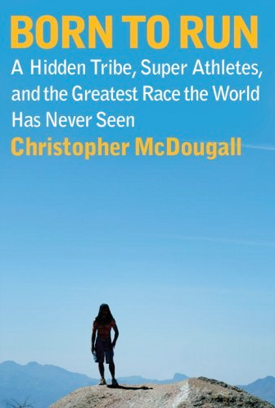Why is running form “controversial”? Because your pain is worth a lot of money.
Patient: “Doc, it hurts whenever I go like this.
Doctor: “Don’t go like that.”
Over the past few years, Daniel Lieberman’s lab at Harvard University has made a series of groundbreaking discoveries by testing one simple premise: if your leg hurts when you move it one way, try moving it another. And what has he found? In 2004, he and Dr. Dennis Bramble at the University of Utah revealed that humans are born with the natural capacity to outrun any animal on the planet. In 2010, Lieberman showed you can avoid a tremendous amount of initial impact shock by landing on your mid-forefoot, instead of your heels [Care to test it yourself? Take off your shoes and jump off a chair. Compare the sensation of landing on your heels — ouch — versus landing on your forefoot — aah].
But does a softer landing mean fewer injuries? That’s what Dr. Lieberman and fellow researcher Adam Daoud set out to discover when they dug into four years of data from Harvard’s cross-country team. Their findings: “those who habitually rearfoot strike had approximately twice the rate of repetitive stress injuries than individuals who habitually forefoot strike.” And not only were forefoot strikers getting hurt less often, they were running more: on average, they were logging higher mileage than the heel-strikers.
Great news, right? A highly-regarded Harvard scientist who is a veteran marathoner and has tested his theories over the past decade in the lab, in the field, and on himself may have come up with a way to dramatically reduce running injuries, one of the most vexing problems in health and exercise. Best of all, it’s free. No pills, no fancy shoes, no podiatrists. All you have to do is change your form, maybe with a simple drill like the 100 Up, and running could become as safe and fun as it was when you were a kid. The implications are breathtaking: what if millions of people no longer suffered running injuries every year? What if millions of others who are afraid of getting hurt can now start running without fear of ruining their knees, feet, and backs?
Yet somehow, this is worrisome. Nearly very article about running form, including this story today by New York Times science writer Gretchen Reynolds, warns that changing your form is “controversial” and depicts it as bitter medicine. “Does this mean that those of us who habitually heel-strike, as I do, should change our form?” Reynolds wonders. And absorb this quote: “The study, for which researchers combed through four years’ worth of data about the Harvard runners, has produced the surprisingly controversial finding that how a person runs may affect whether he or she winds up hurt.” Really? What’s so shocking about the idea that the way you move your body may affect whether you hurt it?
Usually, a breakthrough that can radically improve national health and has strong biomechanical science behind it is welcomed as “promising” and “exciting.” So why is running form different? Because if you strip Lieberman’s work down to raw essentials, you come up with a single hard truth: cushioned running shoes are a fraud. They don’t help, they probably hurt, and the billions of dollars that are made every year by selling and promoting them are cashing in on your pain. With that mountain of money at stake, a tremendous amount of effort has been made to create the false impression that cushioned shoes are a safety item, like bike helmets and seat belts. It’s not easy to reverse a misconception like that, especially when it’s such a cash machine for everyone who makes, sells, and “reviews” running shoes.


